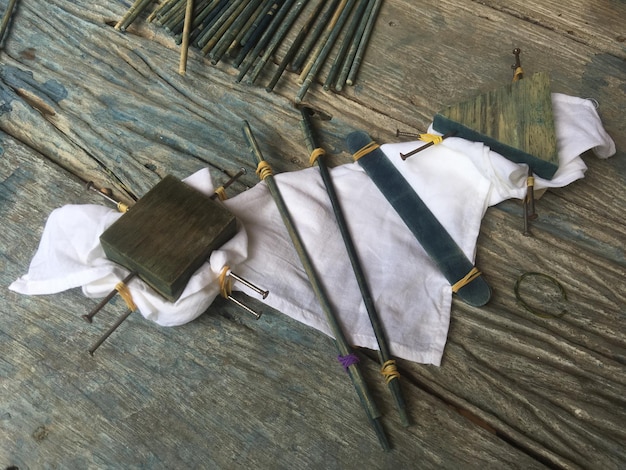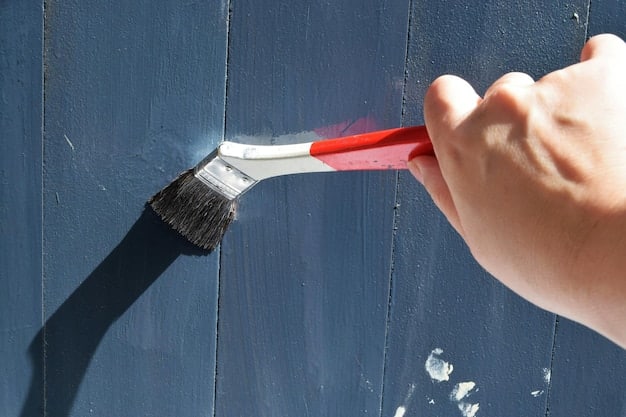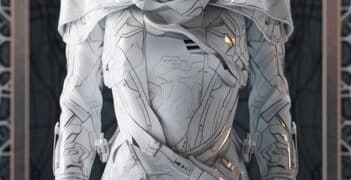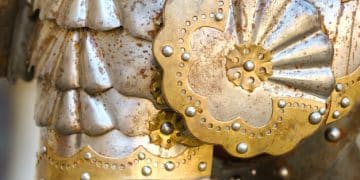DIY Cosplay Weaponry: Build Lightweight, Convention-Safe Props

DIY cosplay weaponry involves creating costume props that are lightweight, safe for conventions, and visually impressive, often using materials like EVA foam, PVC pipes, and thermoplastics to achieve realistic designs.
Creating your own cosplay weapons can be an incredibly rewarding experience. Not only do you get to bring your favorite characters to life, but you also gain valuable crafting skills. However, it’s crucial to ensure your creations are both impressive and safe for convention environments. This guide explores the art of DIY cosplay weaponry: building lightweight and convention-safe props.
Getting Started with Cosplay Weaponry
Embarking on the journey of crafting cosplay weapons requires a blend of creativity, technical skill, and a keen understanding of convention regulations. It’s about transforming raw materials into realistic props that capture the essence of beloved characters, all while prioritizing safety and practicality.
Choosing the Right Materials
The materials you select play a crucial role in the final product. Lightweight, durable, and easily workable materials are ideal for cosplay weaponry. Consider these options:
- EVA Foam: A closed-cell foam that’s easy to cut, shape, and paint. It’s excellent for creating swords, shields, and armor.
- PVC Pipes: Lightweight and sturdy, PVC pipes are perfect for creating the core structure of long weapons like staffs, spears, and polearms.
- Worbla/Thermoplastics: These materials can be molded and shaped using heat, allowing for intricate details and durable finishes.
- Foam Clay: Ideal for adding fine details and textures to your weapons.
Remember to consider the weight of your chosen materials, especially for larger props. Lighter materials will make your cosplay more comfortable to wear and carry around at conventions.

Understanding Convention Rules
Before you even start crafting, familiarize yourself with the specific rules and regulations of the conventions you plan to attend. Most conventions have strict guidelines regarding prop weaponry, including:
- Size and Weight Restrictions: Many conventions have limits on the overall size and weight of props.
- Prohibited Materials: Sharp metal edges, functional firearms, and projectiles are typically banned.
- Peace Bonding: Props may need to be “peace bonded,” meaning they are tagged to indicate they have been inspected and approved by convention staff.
Always check the convention’s website or contact the organizers directly to get the most up-to-date information. Ignoring these rules can lead to your prop being confiscated or even being denied entry to the event.
Starting your cosplay weaponry journey involves selecting appropriate materials and understanding convention rules. Prioritizing safety and knowing the regulations will ensure you create impressive and compliant props.
Designing Your Cosplay Weapon
The design phase is where your creativity truly shines. A well-thought-out design will not only make your weapon look fantastic but also ensure it’s structurally sound and practical for cosplay use. This stage involves research, sketching, and considering the functionality of your prop.
Reference Gathering
The foundation of any great cosplay weapon is thorough research. Gather as many reference images as possible from various angles. This could include screenshots from video games, illustrations from comics, or even pictures of existing prop replicas. Pay attention to:
- Overall Shape and Dimensions: Understand the basic form and proportions of the weapon.
- Details and Textures: Identify any unique features or surface details.
- Color Palette: Note the colors and how they are applied to the weapon.
Having a comprehensive set of references will guide you through the creation process and help you stay true to the original design.
Sketching and Prototyping
Once you have your references, start sketching out your weapon design. This doesn’t have to be a perfect work of art; the goal is to visualize the different components and how they fit together. Consider creating a simple prototype using cardboard or scrap foam to test the size and feel of the weapon.
Prototyping helps you identify any potential issues with your design before you commit to more expensive materials. It’s much easier to make adjustments to a cardboard mock-up than to rework a partially completed foam sword.
Designing your cosplay weapon with research and prototypes helps ensure a realistic and practical result. The prototyping phase can highlight design flaws early, saving time and resources.
Building a Lightweight Sword
Swords are a popular choice for cosplay, but they can also be challenging to create, especially if you want them to be lightweight and convention-safe. You’ll learn how to build a sword that looks impressive but won’t weigh you down.
Core Construction
The core of your sword provides its structural integrity. Using a material like PVC pipe for the core ensures that the sword remains rigid without adding excessive weight. Cover the PVC pipe with EVA foam to create the basic shape of the blade.
- Cut the PVC Pipe: Measure and cut the PVC pipe to the desired length of your sword.
- Shape the Foam: Use a knife to cut and shape EVA foam sheets into the blade profile.
- Adhere Foam to Core: Attach the foam to the PVC pipe using contact cement, ensuring a secure bond.
Adding Details and Finishing
With the core structure in place, add details and finishing touches to bring your sword to life. This involves layering foam pieces to create raised elements, adding texture, and applying a realistic paint job.
Painting is crucial for achieving a convincing look. Use acrylic paints and dry brushing techniques to create weathering and highlights. Applying a clear coat will protect the paint and give the sword a polished finish.

Building a lightweight sword requires a PVC pipe core covered with EVA foam, attention to details, and painting. This combination ensures both aesthetic appeal and safe handling at conventions.
Crafting a Convention-Safe Shield
Shields are another popular cosplay prop, offering both visual impact and character defense. Building a convention-safe shield involves selecting lightweight materials and ensuring there are no sharp edges or protrusions that could pose a risk to others. You’ll learn the important considerations for creating a shield that is safe.
Foam Shield Construction
EVA foam is an excellent choice for constructing a shield due to its lightweight nature and ease of shaping. Start by creating a template of your desired shield shape and transferring it to the foam.
Layering foam can also create beveled edges or raised details. Use contact cement to glue foam pieces, ensuring a strong and durable bond.
Straps and Support
Attaching straps to your shield allows you to hold it securely and comfortably. Use nylon straps and buckles so you can adjust to fit your arm. Secure the straps to the back of the shield with rivets or strong adhesive.
Check with the rules if peace-bonding is required. Peace-bonding helps demonstrate that the straps and buckles are securely attached and do not pose a risk.
Crafting a convention-safe shield requires a layered foam structure including secure straps. Knowing the materials and construction techniques will allow for a safe prop.
Painting and Weathering Techniques
The paint job can make or break a cosplay weapon. A well-executed paint job can transform a simple foam prop into a convincing replica of a legendary weapon. Weathering techniques add realism and depth.
Priming and Base Coats
Before you start painting, it’s essential to prime your prop. Priming helps to create a smooth surface for the paint to adhere to and prevents the foam from absorbing too much paint. Use a flexible sealant or several coats of PVA glue.
This base coat provides a uniform color across the entire surface and helps to create a foundation for subsequent layers.
Weathering Effects
Weathering adds depth and realism to your prop, making it look like it has seen battle or been exposed to the elements. A simple technique for weathering is dry brushing. Dry brushing involves dipping a brush into a small amount of paint, wiping off most of it onto a paper towel, and then lightly brushing it across the surface of the prop. This creates highlights and shadows.
Sealing the paint job before adding weathering can help prevent mistakes from becoming permanent. Experiment with different weathering techniques to find the ones that work best for your desired look.
Painting and weathering are more than just adding color. Using primers, base coating, and weather techniques, can help boost realism and help your weapon look more impressive.
Final Touches and Convention Prep
With your cosplay weapon built, painted, and weathered, it’s time to add the final touches and prepare for the convention. This includes ensuring your prop is safe, comfortable to carry, and compliant with all convention rules.
Safety Checks
Give your weapon a thorough safety check before heading to the convention. Look for any sharp edges or loose parts that could cause injury. Sand down any rough spots and reinforce any weak areas.
- Smooth Edges: Ensure all edges are smooth and rounded to prevent cuts or scrapes.
- Secure Attachments: Double-check that all straps, handles, and decorative elements are securely attached.
- Flexibility: Test the flexibility of the weapon to ensure it won’t break under pressure.
Comfort and Mobility
Consider how you will carry the weapon throughout the convention. If it’s a sword, you might want to attach a scabbard to your belt. If it’s a shield, ensure the straps are comfortable and adjustable.
Practicing movements with your weapon before the convention can help you identify any potential issues. Making small adjustments can make a big difference in your overall comfort and mobility.
Convention prep involves final safety checks, ensuring mobility and comfort. Taking these steps guarantees enjoyment and compliance, allowing you to enjoy without worrying.
| Key Point | Brief Description |
|---|---|
| 🛡️ Material Choice | Select lightweight materials like EVA foam and PVC pipes for easy handling. |
| 📏 Convention Rules | Adhere to size, weight, and material restrictions; peace bonding may be needed. |
| 🎨 Painting Tips | Use primers, base coats, and weathering techniques for a realistic look. |
| ✅ Safety Check | Ensure no sharp edges, secure straps, and mobility for safety and comfort. |
FAQ
▼
EVA foam is an excellent choice due to its lightweight nature and ease of shaping. PVC pipes are great for creating the core structure of weapons, and thermoplastics like Worbla can be used for intricate details.
▼
Check the convention’s rules regarding prop weaponry. Ensure there are no sharp edges, functional projectiles, or prohibited materials. Many conventions require props to be “peace bonded” after inspection.
▼
Start with a primer to create a smooth surface. Use acrylic paints for base coats, and apply weathering techniques such as dry brushing or washes to add depth and realism. Always seal your paint job with a clear coat.
▼
Prototyping is very important. Creating a simple mockup using cardboard or scrap foam can help you identify any potential design flaws before you commit to more expensive materials. It allows for size and feel adjustments.
▼
Give your weapon a thorough safety check. Ensure all edges are smooth, attachments are secure, and it complies with convention rules. Consider how you’ll carry it, and practice moving with it for mobility and comfort.
Conclusion
Creating convention-safe cosplay weaponry is an art that blends creativity with practical considerations. By understanding material choices, design principles, and safety regulations, you can craft impressive props that enhance your cosplay experience while ensuring a safe environment for everyone at the convention.





